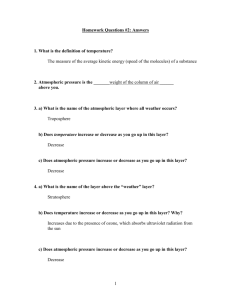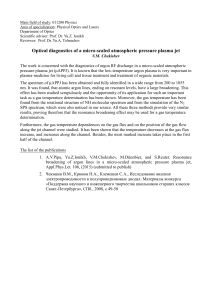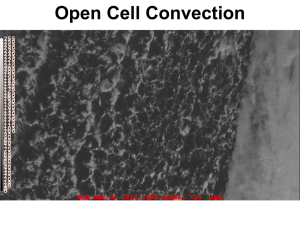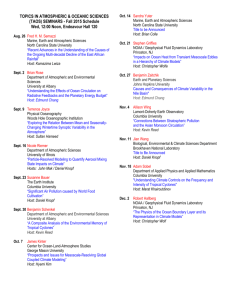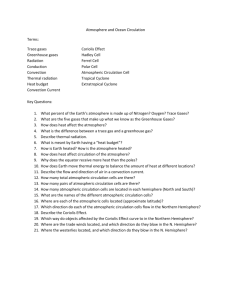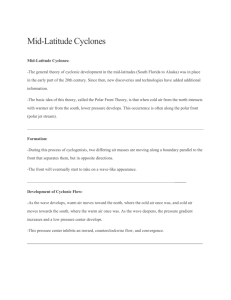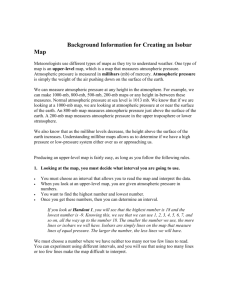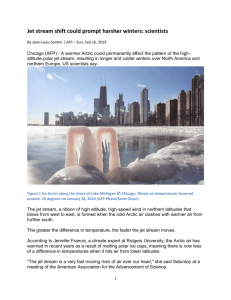Homework Questions #2: Due: Monday, February 11 1. What is the
advertisement
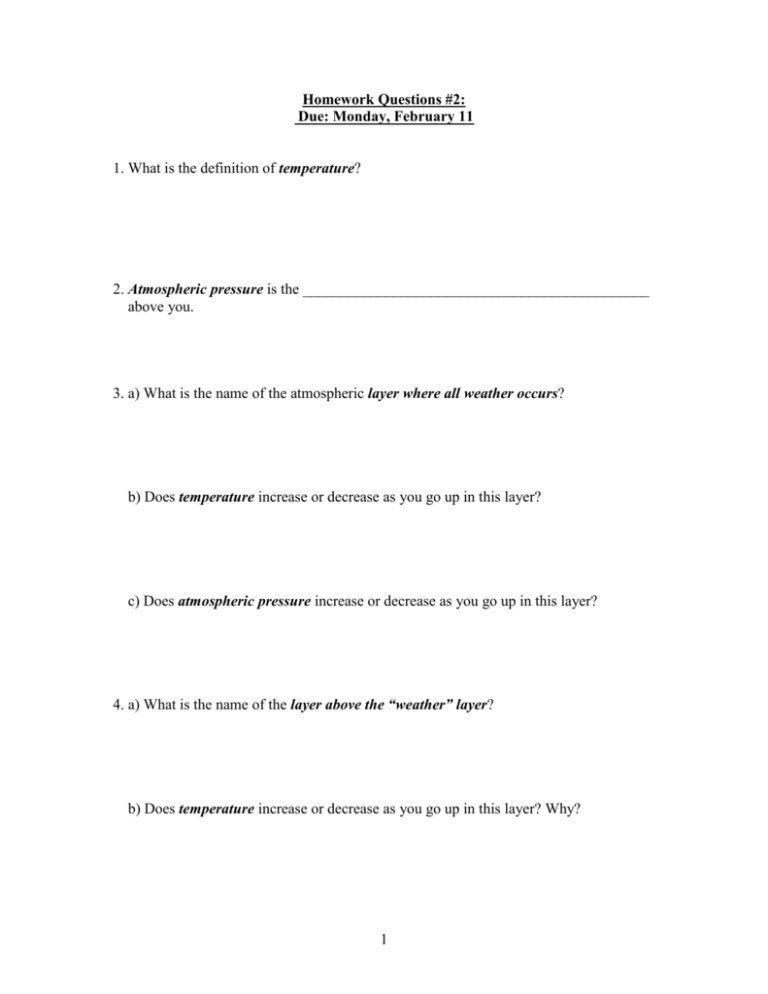
Homework Questions #2: Due: Monday, February 11 1. What is the definition of temperature? 2. Atmospheric pressure is the ______________________________________________ above you. 3. a) What is the name of the atmospheric layer where all weather occurs? b) Does temperature increase or decrease as you go up in this layer? c) Does atmospheric pressure increase or decrease as you go up in this layer? 4. a) What is the name of the layer above the “weather” layer? b) Does temperature increase or decrease as you go up in this layer? Why? 1 c) Does atmospheric pressure increase or decrease as you go up in this layer? 5. What is the transition between the “weather” layer and the layer above called? 6. Which is lighter (less dense) moist air or dry air? 7. Which is lighter (less dense) warm air or cold air? 8. Wind direction is the direction_____________________________________________. 9. Rawinsondes (“weather baloons”) provide information on ______________________ __________________________________________ for weather analysis and computer modeling for weather forecasting. 10. Radar is utilized to identify _____________________________________________. 11. Doppler radar is useful for identifying ____________________________________. 12. a) What type of satellite is only useful during the day? 2 b) Which type of satellite essentially measures the temperature of visualized objects and can be used at all times, day and night? 13. Lines (contours) of equal pressure drawn on a weather map are called _____________________________. 14. What type of atmospheric motion “causes” weather? 15. Rising air causes ___________________________ weather and sinking air causes _____________________________ weather. 16. As air rises it _______________________________ so that water vapor eventually _____________________________________, forming _______________________. 17. What is the characteristic of water that makes it a unique element on earth and also why it plays such an important role in extreme weather? 18. Saturation vapor pressure (SVP) measures _________________________________ ___________________________________. 19. SVP is determined solely by _______________________________________. 3 20. Relative humidity (vapor pressure/SVP) measures how close the air is to being _____________________________________. 21. Dewpoint temperature is the temperature you would need to cool the air down to for _______________________________________________. It is also a measure of the ________________________________________________________in the air. 22. When cloud formation occurs there is a release of ___________________________, which provides the energy for some types of extreme weather. 23. What are the three general causes of vertical motion in the atmosphere? 24. What force generates the wind and determines how fast it will blow? 25. Coriolis force is an ___________________________ force that exists due to _______________________________________________. 26. Coriolis force only changes ________________________________________ not its ______________________. 4 27. What are the two forces that are generally in balance (in a horizontal plane; called geostrophic balance) above earth’s surface? 28. Because of this balance (#60) wind flows __________________________ around low pressure systems (cyclones) and _____________________________ around high pressure systems (anticyclones). 29. What is a jet stream? 30. At what level of the atmosphere are the winds in a jet stream the strongest? 31. What type of “gradient” between the tropics and the poles results in the pressure differences that creates jet streams and determines how strong the winds in them will be? 32. Which type of extreme weather, extratropical cyclones or tropical cyclones (hurricanes) are associated with jet streams? 33. _____________________________ at the tropopause results in removal of air from the atmospheric column leading to upward motion in the troposphere and eventual development of surface low pressure. 5 34. What two jet stream flow features are associated with this process (#33)? 35. Where, relative to a “trough” in the jet stream, is a surface low pressure system most likely to develop. (Identify this location in a wave diagram like the one I drew in class) 36. a) What is the additional force, only present to a significant degree at earth’s surface, that results in convergence into a surface low pressure system to complete the vertical circulation associated with these systems? 6
